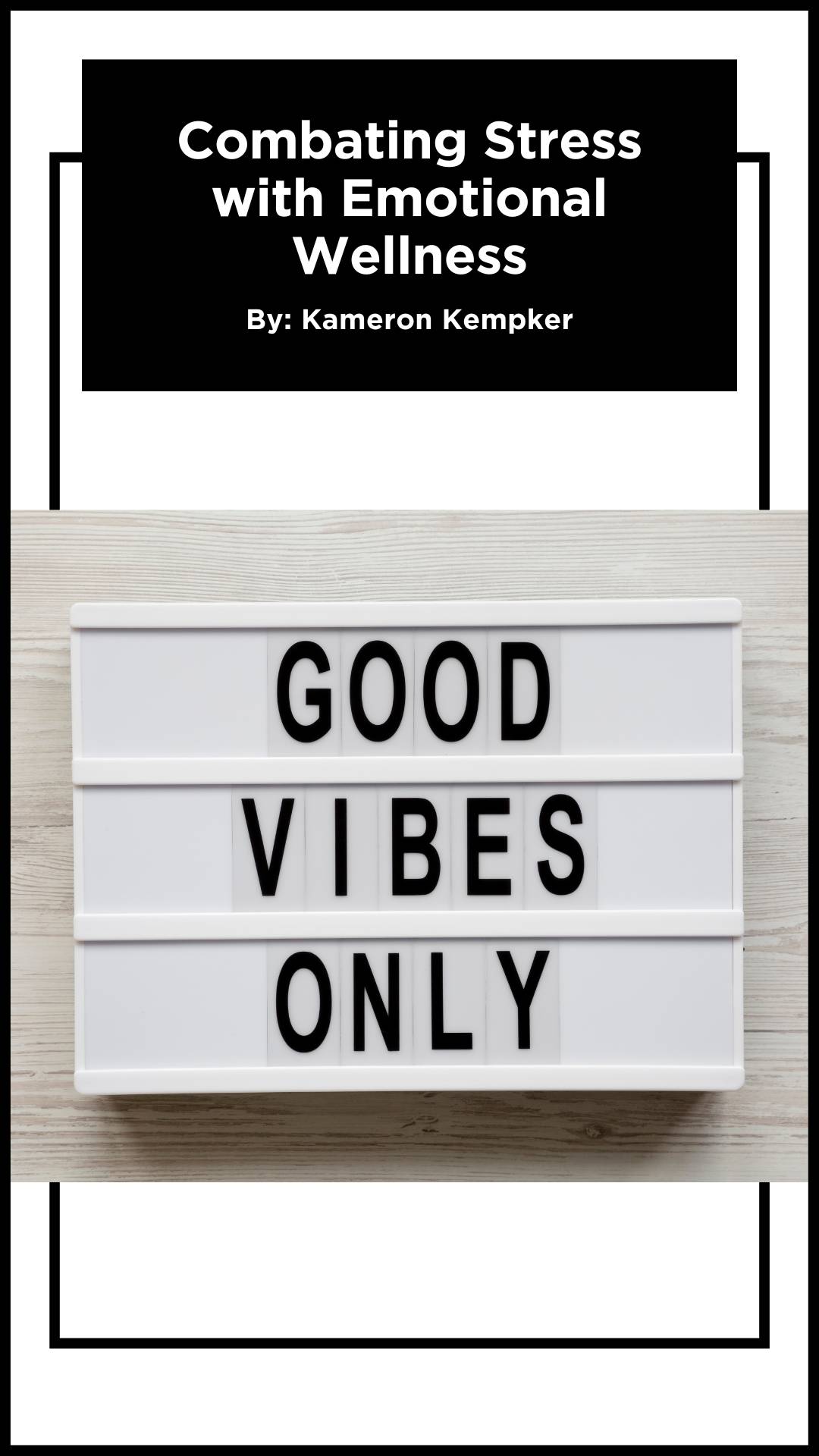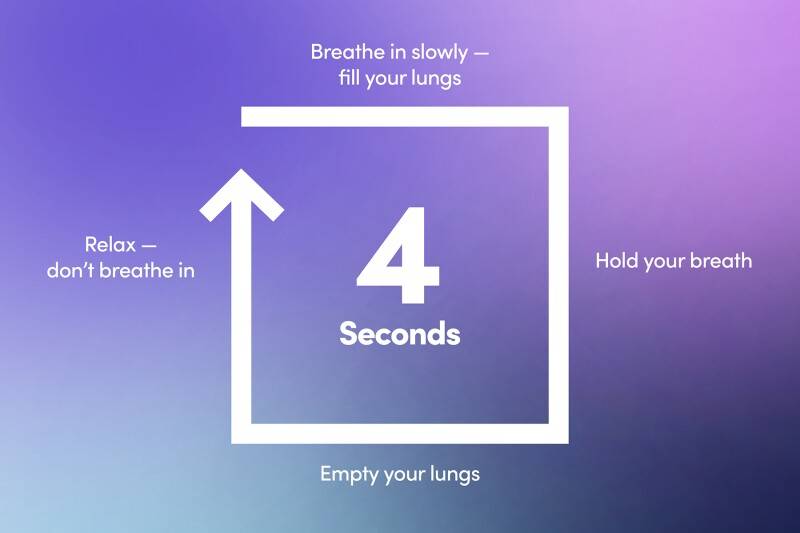Blog
Permanent link for The Year of Self-Love on January 25, 2024
In case you didn’t know (just like I didn’t), January is Self-Love Month! What could be a better way to start off the new semester than that, huh? But, just because January’s almost over, that doesn’t mean you should stop practicing self-love during the rest of the year! For some of you, you might have self-love locked down. For others, it might be a bit harder. Either way, we’ve got some helpful tips and activities that’ll help you nurture and flourish the love you have for yourself.
What is Self-Love & What Does it Look Like?
Although it might seem obvious, let’s define what self-love really means. Self-love means having an appreciation of your worth; and having concern for, and giving attention to, your own happiness and well-being. Sometimes, that’s easier said than done, though. I know that I’m definitely guilty of putting the happiness of my friends and my partners before my own. It is a good thing to be selfless and put the needs of others first, but not when it’s at the expense of your own well-being. You deserve to be appreciated and happy. And no one else can truly appreciate you better than yourself.
So, we know what self-love is, but what does it look like? Well, self-love looks like taking care of yourself mentally, emotionally, physically, and socially. Simply put, practicing self-care can develop the love you have for yourself. Self-care encompasses the actions and practices that you take to support your overall well-being.
How To Develop Self-Love Through Self-Care
The first step in practicing self-care is to know yourself and your body. Start by taking a moment to recognize how you feel after engaging in specific activities like sleep, exercise, spending time with friends, a favorite hobby, or a night out partying. Which activities seem to drain you? And which feel like they rejuvenate you? Do some of them give you energy only for a certain amount of time before becoming draining? Knowing what makes you feel good (and what doesn’t) is the first step in knowing what you need in order to care for yourself.
For example, if you know you feel better after physical activity (and let’s be honest, most of us do), self-care is making room in your schedule to exercise, even if it means giving up something else like watching your favorite TV show. Sometimes, self-care isn’t fun. It means following through with what you need even if you don’t want to. Sometimes, self-care can be hard, too, such as having to set boundaries with friends and with loved ones. This can look like saying “no” when something is asked of you even if that means disappointing someone else, or standing up for yourself when you’re being treated unfairly. It can also look like ending a toxic relationship because it might be hard to see it, but you know that you deserve better.
All of this isn’t to say that self-care can’t be enjoyable or fun because it absolutely can be! Self-care can also look like taking a day off because you’ve been working really hard lately (maybe a little too hard) or reading a good book or going to see a movie. It can look like treating yourself to a special food or taking a relaxing bath, getting your hair done, playing a video game, or spending time with friends.
Ultimately, self-care is listening to your body and your mind, and then giving yourself whatever it is you need in order to feel your best and become the best version of yourself that you can be.
Classic Self-Care Tips
Some specific ideas for practicing self-care while at college include:
- Setting a routine (and sticking to it). As mentioned earlier with the exercise example, you may not want to do it, but you will benefit from it. So decide to do it and follow through; it’ll help you feel more productive and focused in the long run.
- Prioritizing your sleep. As a college student, there’s always something to do (trust me, I know). But making sure you get enough sleep each night (at least seven hours), will give you more energy to do even more things. Read more about How to Unleash Your Inner Sleeping Beauty!
- Eating as many balanced meals as possible. Again, another task that can be difficult for college students, but not impossible. Giving your body the nutrients it deserves will make you feel better physically and mentally. Here are some recipes from one of our other blogs!
I hope these ideas help you practice self-care and I wish you a very happy year of self-love!
By: Sara, WIT Peer Educator
Image created by Dani DiPirro on positivelypresent.com
Categories:
General Wellness
Nutrition
Press Pause
Rest
Sleep
Posted
on
Permanent link for The Year of Self-Love on January 25, 2024.
Permanent link for Stalking Stigma on January 18, 2024
Although it might not be the label we use, many of us hear about, or even experience stalking. January is recognized nationally as Stalking Awareness Month. 18 to 24 year olds experience the highest occurrences of stalking, which can include many college students. We often oversimplify stalking behaviors as, “They’re bothering me” or “This person is being a little creepy”. By reducing the severity of these actions, stalkers can go on to continue these behaviors and cause detrimental effects. This can create stigma around the topic of stalking as well as result in destruction of a victim’s life.
Stalking Tactics
Stalking tactics can be categorized as surveillance, life invasion, intimidation or interference. People may believe stalking behaviors that are categorized as surveillance, for example watching or gathering information, may not be ‘as dangerous’. One article summarizes that throughout our justice system, physical harm is taken more seriously than psychological harm. This causes stalking charges to become less frequent due to the stigma of it. Stalking is a severe crime that can completely alter a victim’s life psychologically or even physically. Stalking tactics that are categorized as interference include: Spreading rumors, impersonating the victim, publicly sharing personal information, damaging property or even physical attack.
Many people experiencing stalking may be hesitant to report the crime. On average, only 39% of victims report to the police. The most common reasons for not reporting included, “it was “not a police matter” (20%), “police couldn’t do anything” (17%), and fear of “reprisal from stalker” (16%)”. These statistics for lack of reporting can be alarming, as the victims can experience negative consequences from stalking behaviors. The impacts of stalking for the victim can range from financial/occupational loss, depression, insomnia, anxiety and/or social dysfunction.
What is Stalking Exactly?
The definition can vary from state to state, or even between universities, due to different jurisdictions. Title IX defines stalking as, “Engaging in a course of conduct directed at a specific person that would cause a reasonable person to (1) Fear for the person’s safety or the safety of others; or (2) Suffer substantial emotional distress”.
As stated earlier, there are also many different stalking tactics. So, let’s break it down a little bit more:
Types of Stalking Behavior: (SLII)
Surveillance
-Watching and gathering information
- This includes following, watching, monitoring online presence, seeking out personal information or using tracking software
Life Invasion
-Showing up in victim’s life without consent
- This includes repeatedly initiating unwanted contact, sending gifts, spreading rumors, invaded property, humiliation, showing up to places that you commonly go
Intimidation
-Intimidation with the prior experiences and context in mind
- This can include threats- personally or others victim cares about-, blackmail, engagement in symbolic violence, anything to alarm or intimidate
Interference
-Affecting a victim’s reputation, career or safety
- This can include damaging property (or stealing), causing a serious accident, disrupted professional or social life, holding against will, assaulted victim or others close to victim
How Can I Prevent This or Take Action Against It?
It can be hard to know who to trust, but ultimately, trust your gut! If something doesn’t feel right, you’re probably right. Avoid giving out personal information such as phone numbers or addresses if possible. If you feel safe to do so, practice setting some boundaries. Here are some examples:
- “I am not interested in having a relationship with you. Do not contact me ever again”
- “I do not want you to have contact with me in any way. If you continue to do so-or if you are on my property, or follow me-I will call the police”
If you feel unsafe or the behaviors continue, seek help! You can either reach out to GVPD ((616) 331-3255) or directly call 911 if you are in immediate danger. Or you can contact 616-331-9530 to speak to the Office of Civil Rights and Title IX or 616-331-2742 to speak to Victim Advocate Stalking is a serious issue that can result in many harmful outcomes for the victims. Being aware of how stalking occurs and how to seek help can be extremely valuable to keep yourself and others safe!
By: Claire, WIT Peer Educator
Categories:
General Wellness
Posted
by
Katie Jourdan
on
Permanent link for Stalking Stigma on January 18, 2024.
Permanent link for New Year, New Series with WIT! on January 18, 2024
Do you ever get into a routine and then come to realize your week went by in a blink? Do you ever get the feeling that what you are learning is losing its charm? Are you wondering how you can be more present and have more fun? Well according to many studies, the answer could be curiosity:
- Beat the winter blues with curiosity. Studies have shown that when we discover or learn about something new our brains send us signals that make us feel good, boosting our mood.
- Build relationships. Research shows that genuine curiosity is one of the biggest factors that contributes to creating a closer connection when interacting with others.
- Score higher on assignments. Whether at school or any other occupation, having curiosity about the task at hand can improve the overall outcome of our efforts.
This winter, the WIT Peer Educators are excited to keep your adventuring and curiosity going with some new content each week! We are a group of fellow students with a passion for helping our peers stay informed and inspired about health and wellness topics.
We are back this winter with a series of content including some of our favorite topic areas of sexual health, nutrition, rest, the 8 dimensions of wellness, and much more! We have so many topic ideas we are excited to share with you this semester. Watch for a post every Thursday, either on Instagram, the RecWell blog, or both!
If you can’t wait until Thursday, check out our past blog posts on our website. Take a look at everything from “What is Sexuality?” to “Easy Winter Meals to Make in Your Dorm” to “How to Unleash Your Inner Sleeping Beauty". Got another idea you’d like to see? Head over to our Ask WIT question box and we’ll get one written just for you!
If blog posts or Instagram aren’t your thing, scroll through the student wellness website containing a plethora of information and resources, request a presentation on our website, catch us at the WIT cart (probably inside this semester) or attend some of our many events, including the continuation of the Eat Well series with Laker Food Co.
Whatever you might be up to this winter, we hope you can take some moments to pause and explore a range of wellness topics to boost your mood, foster growth in the 8 dimensions of wellness, put more joy into learning, and reap the benefits of curiosity!
By: Josie, WIT Peer Educator
Categories:
Fitness
General Wellness
Nutrition
Press Pause
Rest
Sexual Health
Sleep
Winter
Posted
on
Permanent link for New Year, New Series with WIT! on January 18, 2024.
Permanent link for Ways to Keep Your Immune System Strong in the Cold Winter Months on December 11, 2023
Well, I think we can say that we are finally getting into the colder months. As I walk around campus I see the ugg boots, coats, hats, and gloves and the coffee shops busier than ever! With this time of year cold and flu season kicks into high gear and we must take the time to make extra efforts in keeping ourselves healthy. While it's impossible to remove yourself completely from all the winter germs, there are many things you can do to help keep your immune system in tip top shape so that you can fight the germs when they come your way.
Sleep and immunity are closely tied, as poor quality sleep is linked to higher susceptibility to sickness. Getting adequate rest is important to strengthen your immunity and keep up with your busy schedule. Also, if you do get sick, it's important to allow your body extra time for rest as your body will be able to better fight off the illness. Adults should get at least 7 hours of sleep each night to promote healthy sleep hygiene. If you have trouble sleeping, keeping your room as dark as possible, going to bed at the same time each night, and exercising regularly can help improve sleep quality.
Foods like fruits, vegetables, nuts, seeds and legumes are full of nutrients and antioxidants that help decrease inflammation in the body. Increased inflammation is linked to having a lower immune response and can cause you to catch a cold easier. Also, fiber in plant foods feed your gut microbiome which is the bacteria that lives in your stomach along the digestive tract. A good gut microbiome can improve your immunity and help keep harmful pathogens from entering your body via the digestive tract. Fruits and vegetables high in vitamin C like oranges, strawberries, broccoli, tomatoes and potatoes also will help to fight off that common cold. Other foods that are particularly good for the immune system include whole grains, lean protein, fermented foods such as yogurt, sauerkraut, miso or tempeh, and some spices like garlic, ginger, turmeric and even cinnamon.
Moderate exercise can help boost your immune system tremendously. It has been shown to be just as effective as vaccines in people with compromised immune systems. Regular moderate exercise also helps keep inflammation low and help your immune cells regenerate regularly. Jogging, walking, swimming, lifting or any other activity you enjoy are all great ways to keep your body healthy!
Water plays many important roles in our body including supporting our immune system. Water is important because our blood and lymph, the fluid that provides a way for the body to get rid of waste, need water in order to keep the immune cells in them flowing and circulating. It's important that you are hydrating with the right fluids too. Water is the best, as you should try and avoid loading up on caffeinated drinks, juices, and sodas.
It's important to keep stress levels at bay as chronic stress can really impact your health. Stress can potentially have a secondary impact on your immune function if it leads to sleep disturbances, a tendency to eat less nutritious foods, less water intake, and less frequent exercise. A tip to help keep stress levels low is finding time to engage in self care regularly. Whether that is lighting a candle, reading, walking in nature, a nice warm bath, or enjoying a cup of coffee or tea.
Utilizing these simple techniques can help you stay healthy during the colder months so that you can enjoy all that this season has to offer. I know I’ll be!
By: Amber Gunneson, WIT Volunteer
Categories:
General Wellness
Nutrition
Rest
Sleep
Posted
on
Permanent link for Ways to Keep Your Immune System Strong in the Cold Winter Months on December 11, 2023.
Permanent link for Are you Eating Enough? on December 1, 2023
I hope everyone had a lovely thanksgiving break! I hope you were able to relax, eat yummy foods, and/or spend time with loved ones as I know I did! While on break I got to thinking about what my next post would be, and with all the holiday foods and family time I was reminded by the diet talk that comes along with this time of year. The talk of calories and weight are everywhere as we tend to enjoy more diverse foods. No matter where you are, or who you are, it's hard to not get reeled into this type of thinking. However, it's important to remember the basics and the actual science! That's where I come in to help remind you when you start to hear that diet culture talk!
There’s a lot of talk about calories around this time of year and how we need to “watch” how many calories we are eating. However, it is important to keep in mind your eating behaviors and how your body feels in relation. Many times people think that our bodies don’t need many calories or that we need to exercise a ton to “earn” our calories but our bodies need WAY more than we think just to keep our heart pumping, digestion working, and for our brain to function. However, if we don’t give them the fuel(calories) then they won’t be able to perform these bodily processes which in turn can lead to a lot of health consequences.
First off, I want to remind you that everyone’s needs are different and no two people need the same amount of fuel to perform their best! We are all unique and we can not compare. We also can’t be certain on exactly how many calories we need each day nor do we need too! If you listen to your hunger, fullness and natural body cues your body will often tell you just what it needs. This oftentimes is overshadowed by diet culture which is where the problems start to occur. I thought this would be a great time to look at some signs to tell whether or not you are fueling your body enough or maybe if it's time to look at your eating habits and refine them a bit. Here are some things to look out for.
- You're low on energy- If you are feeling lethargic and more tired than usual this may be a sign that you are not eating enough. When we don’t give our bodies enough fuel just like giving a car gas it won’t run.
- Poor cognition and productivity i.e. brain fog- If you feel like your brain may be stuck in a cloud or that you’re constantly forgetting things this may be a sign that you're not eating enough.
- Irritable Mood- We’ve all heard of the saying, “you aren’t yourself when your hangry!” There is truth to this statement. When we are not giving our bodies enough we can often get very irritable and moody. It can even go further to affect our mental health in many different ways such as increased depression and anxiety symptoms.
- Feeling chilly- It is normal to feel cold when it's snowy and cold but if you are constantly getting cold and can’t get warm this may be a sign you're not eating enough. You need to consume a substantial amount of food to keep your body warm while performing other bodily functions.
- Hair loss and brittle nails- If you are not consuming enough calories your body will take priority in what it will utilize the calories that it is given. The first line of defense is keeping our hearts beating, and our brains and lungs functioning. Hair, skin, and nails are not essential for human life so our body will prioritize. If you notice you're losing more hair, your skin is dry and flaky, or you have brittle nails, this could very well be because you are not consuming enough.
If you are experiencing any of these signs it may be time to look at your diet and what you’re eating. It can also be helpful to reach out for support from your healthcare provider or a dietitian who is specialized in this area and can get you on the right track! What’s awesome is that we have access to a dietitian right here on campus. Check her out and make an appointment if you have any questions regarding your food consumption. She is a great resource and is extremely knowledgeable!
By: Amber Gunneson, WIT Volunteer
Categories:
General Wellness
Nutrition
Posted
on
Permanent link for Are you Eating Enough? on December 1, 2023.
Permanent link for Ways to Navigate the Stressful, Busy Holiday Season on November 17, 2023
During the holiday season everyone seems so busy! With parties, events, finals, shopping and all the exciting and joyful things you participate in at this time of year can become a time of stress and anxiety as well. I know for myself Christmas is my favorite time of year, however, as much joy that it does bring me I have to make sure that during this busy season I find time to take extra care of myself, and my mental health. Oftentimes the holidays, whichever you celebrate, can bring up a lot of different emotions. From excitement, joy, gratitude, and pleasure to overwhelm, sadness, and burnout, this time of year can bring up a lot. I want you to know that you are not alone and this is totally normal! I’ve created some tips that have helped me and others navigate this time of year so that we can still be able to enjoy the holidays as well as take care of ourselves.
It can be extremely helpful to write a list of all the things you need to accomplish. That may also involve prioritizing what should get done first and what can wait till a later date. This may come with having to say no to certain things/plans in order to take care of yourself and not get overwhelmed. This is something I know that I continue to have to work on as I am always wanting to be involved in everything, but I know that if I say yes all the time burnout occurs much quicker and I lose sight of what the holiday season really is supposed to be about.
2. Find pleasure and Joy and Rest
Yes the holidays are busy but it's important to find time to engage in the joyful, pleasurable, rejuvenating things that refresh you and give you energy to get through all the tasks at hand! This also includes taking time to rest. Things like making sure you get enough sleep, making sure you are eating healthy foods in nourishing amounts and finding time for your favorite self care activities is very important. This can all help to avoid getting overwhelmed by the stress of the busy season. Some of my favorite self care activities to do in the winter are taking warm baths, drinking some hot tea or coffee, journaling, watching Christmas/holiday movies, and Christmas coloring pages. I also love lighting holiday scented candles during this time of year!
3. Ask or Accept Help
Accepting and/or asking for help can be an extremely hard task for many. I know for me it is! However, we can not and certainly shouldn’t do everything ourselves. Asking for help is necessary in order to get everything done. It can be helpful to delegate tasks with others like splitting up the cooking or shopping duties. Also, if you find yourself needing extra help to get through finals don’t be afraid to join a study group, visit the tutoring center, or speak with the professor. Everyone needs help from time to time. Don’t feel bad asking for help. We as humans are not made to walk through life alone, and that doesn’t change during the holiday season as well!
4. Allow room for changes in routine
With the holiday season comes a lot of changes in routine and schedule. This can also bring about a lot of stress or anxiety. It can often leave you feeling unsettled and maybe not fully grounded. Change in general, no matter good or bad, can be very hard and even uncomfortable. For me change can sometimes even be scary. The one thing I have learned through going through change is that things will go smoother if you embrace and allow for the change to happen, instead of trying to avoid or resist it. This can be an extremely hard thing to do and I am still working on it myself! Give yourself some grace! It's okay to fall back into your old routine from time to time as well!
5. Find time to breathe…..and Laugh!!
It's important to remember to breathe during this time of year. We often hold so much stress and tension that we forget to do this simple thing. Breathing and taking a second to focus on your breath can bring comfort, strength, and focus to get you through the day/season. Not only is it important to breathe, it's also important to find time to laugh! The holidays shouldn’t be all stress and anxiety but it should be a time for celebration and excitement as well. Find time to laugh with friends and family, maybe reflecting back on memories or engaging in holiday activities. Laughter can lift our spirits up and release a lot of stress in our bodies.
Utilizing these 5 tips can help make the holiday season or any stressful time of year a much more enjoyable and healthy experience for you! Remember, at the end of the day the holidays aren’t meant to make us anxious, stressed or overwhelmed. However, they are meant to provide celebration, joy, love, and excitement into our everyday lives!
By: WIT Volunteer, Amber Gunneson
Categories:
General Wellness
Press Pause
Rest
Winter
Posted
on
Permanent link for Ways to Navigate the Stressful, Busy Holiday Season on November 17, 2023.
Permanent link for Easy Winter Meals To Make In Your Dorm on November 10, 2023
With the cold weather months approaching us, it is normal to begin craving more warm and comforting food. As the days become shorter it can sometimes feel hard to find motivation to cook a meal during the busy holiday months. There’s so much going on during this time of year but it is really important to still prioritize good nutrition practices for yourself in order to get through the hustle and bustle of the season. I know for myself that during the winter months my nutrition/food choices look different than the spring and summer months. I’ll often make a lot more warm and nourishing meals that comfort both my soul and my body! A lot of meals I make also have a nostalgic feel which brings a sense of gratitude and pleasure for this time of year. You may feel overwhelmed when it comes to cooking and being a college student, but it doesn’t have to be overwhelming. Many recipes that I make only take a few ingredients and a few minutes to make. They are also relatively cheap, and won’t hurt your budget! Below are some winter-inspired recipes to spruce up your holiday season!
Ingredients:
- 2 slices of whole grain bread (or bread of choice)
- 1-2 tbsp peanut butter or any nut or seed butter
- 1 banana
- 1 tbsp honey
- A sprinkle of chia seeds
- Cinnamon to taste
Directions: Toast 2 slices of bread in a toaster or toaster oven. Spread peanut butter or any nut butter of your choosing on top of the bread. Slice a banana and put on top of the toast. Drizzle on the honey, then sprinkle on some chia seeds as well as cinnamon to taste! Enjoy!
Ingredients:
- S cup to ½ cup milk (dairy, almond, coconut, soy)
- ½ cup old fashioned rolled oats
- S cup to ½ cup yogurt (optional)
- 1 tsp chia seeds (optional)
- ½ banana mashed
Serving suggestions: Fruit, nut butters, granola, coconut, nuts, spices, vanilla extract
Directions: Add the desired amounts of milk, oats, yogurt, chia seeds and banana to a jar or container and give them a good stir. Refrigerate overnight or for at least 5 hours.
In the morning, add additional liquid if you'd like. Once you achieve the desired consistency, top with fruit, nuts, nut butter, seeds, granola, coconut, spices, or vanilla extract.
5 Ingredient Pesto Chicken Soup
Ingredients:
- 4 cups chicken stock
- 3 cups fresh spinach
- 2 cups shredded cooked chicken
- 2 cans of great northern or cannellini beans, rinsed and drained
- S cup pesto
- Optional toppings: Grated parmesan cheese
Directions: Stir together chicken stock, spinach, chicken, beans in a medium saucepan. Cook over high heat until the soup reaches a simmer. Then reduce heat to medium, stir in the pesto, and let the soup continue to simmer for 2 minutes. Serve warm topped with parmesan cheese if desired.
*If you would like to make this vegetarian, take out the chicken and substitute with an extra can of beans of your choosing!
Ingredients:
- 1 package(6oz) stuffing mix
- 1 cup water
- 2 tbsp favorite bbq sauce
- 1 lb ground beef, ground turkey, or meat ground substitute
- (beyond burger or impossible burger work well!)
- 1 cup shredded cheddar cheese
Directions: Preheat oven to 375°. In a large bowl, combine stuffing mix, water and 2 tablespoons barbecue sauce. Add meat/meat substitute; mix lightly but thoroughly. Press 1/3 cup mixture into each of 12 ungreased muffin cups. Bake, uncovered, until a thermometer reads 160°, 18-22 minutes. Sprinkle tops with cheese; bake until cheese is melted, 2-4 minutes longer. If desired, serve with additional barbecue sauce.
Ingredients:
- ½ cup flour
- ¼ tsp baking powder
- [ tsp baking soda
- ¼ tsp salt
- S cup milk
- 2 tbsp olive oil
- 2 tbsp pizza sauce
- 2 tbsp shredded mozzarella cheese
- Optional: any toppings you would like!
Directions: Mix the flour, baking powder, baking soda and salt together in a microwavable bowl. Add in the milk and oil then mix together. There might be some lumps but that is ok. Spoon on the pizza sauce and spread it around the surface of the batter. Sprinkle on the cheese, and any additional toppings. Microwave for roughly 2 minutes or so, until it rises up and the toppings are bubbling. Enjoy straight away!
Easy dorm room winter-inspired meals can be a fun way to indulge your senses into the holiday season as well as nourish your body to get through all those end of semester exams! There’s something for everyone to enjoy!
By: WIT Volunteer, Amber Gunneson
Categories:
General Wellness
Nutrition
Winter
Posted
on
Permanent link for Easy Winter Meals To Make In Your Dorm on November 10, 2023.
Permanent link for The Freshman 15: The Who, What, and How it Harms Us on April 26, 2023
The “Freshman 15” is a phrase I am sure most of us are familiar with. For anyone lucky enough to have never come across the “Freshman 15”, let me provide an explanation.
The “Freshman 15” is a widely held notion that freshmen gain 15 pounds once they come to campus due to getting less exercise, excessively drinking, and having unlimited access to campus food.
It is widely known and talked about, but most often used as an anecdote or joke. The first time I heard the phrase was during a campus tour when I was in high school. A representative for that University’s Admissions Department said something along the line of “We offer a large variety of options in our dining halls, and yes some are healthy options, so you can avoid gaining the Freshman 15.” Once I was in college I again heard jokes and comments being made about gaining weight. Staff and students both would make comments about hitting the gym to fight the “Freshman 15.” As a young person struggling with an unhealthy relationship with food and my body, my biggest fear was gaining the “Freshman 15” when I came to college. The use of the term and its negative effect on students is not limited solely to my experience. This phrase is used across the nation and research shows us that it negatively affects students on campuses all across the country.
Despite the innocuous nature of the phrase and the comments it was and is used in, the term is based on weight shame and fatphobia. It is rooted in the false notion that gaining weight is shameful and the discriminatory belief that a thin body is a better body. These negative messages, no matter how small, have the power to do real harm to students' mental health.
I am a graduating Senior in the Frederik Meijer Honors College, for my Senior Project I chose to create a podcast that zeroed in on the “Freshman 15” and illuminated the harms it can have to student health. I am passionate about showing students, their families, and university faculty and staff that this phrase has the power to do real harm.
The podcast is 3 episodes long, each with a different main focus. The first episode covers what “The Freshman 15” is, the history of its origins, and if it really even exists. It also covers why this term affects freshmen specifically and the unique stressors of the transition from high school to college. The second episode covers the stigma around weight and food in the US. I delve into the fatphobia embedded in our society and media and the harm it causes. The last episode covers the weight shame of the COVID-19 pandemic and how fatphobia harms us all. I also talk about the role of families and peers in body image and what we can all do to take care of each other and fight back against weight stigma. You can stream the podcast on Spotify, Check it out here!
We all have the power to fight fatphobia and weight shaming, not just for freshmen, but for everyone affected. This podcast is a tool for learning more about how the “Freshman 15” does harm and what we can do to spread body positivity/neutrality (read more on body neutrality in Camryn’s blog post here!) here on campus and also on social media, in our families, in our friend groups, and throughout our lives.
I hope you check out the podcast and learn that there is a lot more to that simple phrase “the Freshman 15” than you likely ever knew.
By: Eva VanWyck, WIT Peer Educator
Categories:
General Wellness
Nutrition
Posted
on
Permanent link for The Freshman 15: The Who, What, and How it Harms Us on April 26, 2023.
Permanent link for How to Unleash Your Inner Sleeping Beauty: The Ultimate Guide to Better Zzz's for GV Students on April 24, 2023
As a Wellness Information Team Peer Educator, one of the most common concerns we hear from Grand Valley State University (GVSU) students is trouble sleeping. Numerous students have trouble obtaining the sleep they need, whether it's due to trouble falling asleep, remaining asleep, or waking up feeling exhausted. In this blog, we will explore the psychological and emotional impact of sleep and provide practical tips to help students get a good night's rest. Let's dive in!
Think: "Unlocking Your Best Self: The Power of Good Sleep Habits"
When it comes to achieving your goals and feeling your best, quality sleep is a critical component. The way we think about sleep can have a big impact on our ability to prioritize it and establish healthy habits. By recognizing the power of good sleep habits and the benefits they can bring, we can shift our mindset towards prioritizing rest and reaping the rewards of a well-rested mind and body.
The term "thinking" in this sense refers to a variety of activities. You must consider your existing sleeping patterns and attitudes, including whether you value sleep and understand its significance. It also involves being aware of the advantages of getting enough sleep, including enhanced mental clarity, greater physical health, and increased productivity. Last but not least, it is being proactive about changing your sleeping patterns, for example, by putting the blog's advice into practice or looking for extra resources and support.
By "unlocking" the power of good sleep habits and recognizing their role in achieving our best selves, we can take a more intentional approach to sleep and prioritize it alongside other aspects of our well-being.
Feel: "Snooze to Success: Empowering Your Mind and Body with Quality Sleep"
The way we feel about sleep can have a big impact on our ability to prioritize it and establish healthy habits. When we recognize the benefits of quality sleep and the positive impact it can have on our mental and physical health, we're more likely to make it a priority in our daily lives.
The "feel" aspect of this title is all about recognizing the emotional benefits of quality sleep. Getting enough rest can help us feel more energized, focused, and productive during the day. It can also reduce stress and anxiety, improve our mood, and support our overall well-being. By prioritizing quality sleep, we can tap into these emotional benefits and empower ourselves to feel our best.
In this context, "feeling" is about recognizing the connection between our emotions and our sleep habits. It involves understanding the impact that sleep can have on our mood, stress levels, and overall well-being. It also means recognizing the emotional benefits of quality sleep and prioritizing it as a key aspect of self-care.
By "snoozing" to success and empowering our mind and body with quality sleep, we can tap into the emotional benefits of rest and support our overall well-being.
Do: "Take Charge of Your Zzz's: Practical Tips for a Restful Night's Sleep"
There are many factors that can affect sleep quality, including stress, anxiety, caffeine intake, and screen time. Here are some common sleep problems, that students may experience:
- Insomnia: difficulty falling asleep or staying asleep
- Sleep apnea: a condition where breathing is interrupted during sleep, leading to snoring and daytime fatigue
- Restless leg syndrome: a condition where you feel an uncomfortable sensation in your legs that makes it difficult to sleep
- Circadian rhythm disorders: disruptions in your body's internal clock that can lead to difficulty falling asleep or staying asleep at the right times
If you're experiencing any of these sleep problems, it's important to talk to your healthcare provider to determine the best course of treatment.
There are several things you can do to improve your sleep quality. Here are some tips:
- Stick to a sleep schedule: Establishing a consistent sleep routine can help regulate ( your body's internal clock and improve sleep quality. Aim to go to bed and wake up at the same time every day, even on weekends. If you have trouble falling asleep, avoid napping during the day, as this can disrupt your sleep schedule.
- Create a sleep-conducive environment: Your sleeping environment can have a big impact on sleep quality. Make sure your bedroom is cool, quiet, and dark. If you live in a noisy area or have roommates who stay up late, consider using earplugs or a white noise machine to block out distractions. Use blackout curtains or an eye mask if necessary to block out any light that might disturb your sleep.
- Limit screen time : Exposure to the blue light emitted by electronic devices like smartphones, tablets, and laptops can interfere with your body's natural sleep-wake cycle. Try to avoid using electronic devices for at least an hour before bedtime. If you need to use your device, consider using a blue light filter or wearing blue light-blocking glasses to reduce the impact on your sleep.
- Avoid caffeine and alcohol: Both caffeine and alcohol can disrupt sleep quality. Caffeine is a stimulant that can keep you awake, while alcohol can interfere with REM (rapid eye movement) sleep, which is important for memory consolidation and overall sleep quality. Try to avoid these substances in the hours leading up to bedtime.
- Practice relaxation techniques: Stress and anxiety can make it difficult to fall asleep or stay asleep. Practicing relaxation techniques such as deep breathing, meditation, or yoga can help you relax and prepare for sleep. Consider incorporating these practices into your bedtime routine to help calm your mind and body before bed.
- Get regular exercise: Exercise can help improve sleep quality by reducing stress, promoting relaxation, and regulating your body's internal clock. However, try to avoid exercising too close to bedtime, as it can increase alertness and make it harder to fall asleep. Aim to exercise earlier in the day, at least a few hours before bedtime.
- Seek help if needed: If you're struggling with sleep despite trying these tips, consider talking to a healthcare provider or seeking help from a sleep specialist. There are many effective treatments for sleep disorders, such as cognitive-behavioral therapy for insomnia (CBT-I) or continuous positive airway pressure (CPAP) therapy for sleep apnea. Your healthcare provider can help you determine the best course of treatment for your specific needs.
In conclusion, getting enough sleep is critical for overall health and well-being. By prioritizing sleep and taking steps to improve sleep quality, you can feel more rested, alert, and focused throughout the day. Don't hesitate to seek help if you're struggling with sleep, as there are many effective treatments available. Good luck and Sweet dreams!
References:
- Worley SL. The Extraordinary Importance of Sleep: The Detrimental Effects of Inadequate Sleep on Health and Public Safety Drive an Explosion of Sleep Research. P T. 2018 Dec;43(12):758-763. PMID: 30559589; PMCID: PMC6281147.,
- .https://newsinhealth.nih.gov/2013/04/benefits-slumber,
- https://health.gov/myhealthfinder/healthy-living/mental-health-and-relationships/get-enough-sleep
- https://teaching.fsu.edu/tips/2020/10/02/rest-is-essential-for-learning-productivity/
- https://www.health.harvard.edu/newsletter_article/sleep-and-mental-health
- https://www.sleepfoundation.org/sleep-hygiene ,
- https://www.mayoclinic.org/healthy-lifestyle/adult-health/in-depth/sleep/art-20048379
By: Aravind Gurusaran Korukonda, WIT Peer Educator
Categories:
Press Pause
Rest
Sleep
Posted
on
Permanent link for How to Unleash Your Inner Sleeping Beauty: The Ultimate Guide to Better Zzz's for GV Students on April 24, 2023.
Permanent link for Combating Stress with Emotional Wellness on April 13, 2023
Springtime has arrived in West Michigan, and with it so has the end of the semester rush. Finals week is approaching, and most of us are probably more than ready to feel the relief of being done with the school year. Springtime also ushers in April, the Month of Stress Awareness.
With “exam cram season” just around the corner many of us will experience increased levels of anxiety and stress related to the added pressures of school work. At GVSU Recreation & Wellness our goal is to provide students with the knowledge and tools necessary to account for and improve their overall wellness, as well as in specific domains of wellness. Aligning our goals at Rec & Wellness with the month of April’s Stress Awareness, our aim is to present you with the knowledge and techniques that can help you manage the added stress from the end of the academic year.
Stress
To understand why coping with stress using healthy practices is important, we should understand why stress is aversive to our physical and mental health, especially as it’s related to the added pressures at the end of the semester. Stress that stems from the “exam cram season” is typically linked to decreased sleep, internalized expectations/pressures, lack of positive coping techniques, and/or a combination of these. Experiencing these types of stress can be a hindrance to our mental and physical wellness, causing various physiological systems and emotions to become dysregulated. Some of these symptoms may be reported as:
Emotional
- Increased irritability
- Increased anxiety or depression
- Feelings of anger, sadness, loneliness
Physical
- Decrease in sleep, focus
- Shortness of breath, difficulty breathing
- Muscular tension, discomfort
- Changes in appetite
- Vomiting, nausea
- Illnesses become more common as immune system becomes less effective
As we continue to progress closer towards our final exams, most of us may begin to notice and account for more of the feelings or sensations that are described above. Being able to identify and attribute your stressful symptoms to the correct source is the first step towards being able to identify and apply a coping technique that is effective and healthy for you. Although it may seem overwhelming to address these stressors during such a hectic time, the CDC explains that healthy coping mechanisms can reduce stressful feelings and sensations, whether they are physical and emotional. In short, finding ways to deal with stress that elicit positive emotions and improve physical and psychological wellness are the best ways to decrease stress.
Dealing with Stress
Because some stressors present themselves on an individual basis (not every stressor is universal to all) it is likely that one form of coping is not going to be a universal solution for everyone experiencing stress. One practice each of us can apply on an individual basis, however, is mindfulness. Mindfulness is the process of connecting and becoming aware of the changes in your body in response to different situations/sensations. This process is a very grounding experience and has been linked to decreases in stress, anxiety, and depression.
Here are a few short mindfulness exercises you can do wherever you are to be able to identify and listen to your bodily sensations:
Box Breathing: An exercise used to regulate blood pressure, breathing, heart rate, stress, and anxiety. This exercise targets our respiratory system to actively reduce the amount of cortisol (stress hormone) in our blood stream.
- To do this exercise sit in a chair with good posture (spine in alignment) or lay down flat.
- Follow the graphic at the bottom of the blog post, begin in the top left corner and follow the instructions on the outside of the box as you move along. Repeat these steps, and imagine the circle moving along the perimeter of the box as you go, taking 3-5 minutes or until you feel relaxed and refocused.
5-4-3-2-1: This activity allows us to make time to account for ourselves and our environment, deepening our connection to our bodily sensations.
- In your immediate surroundings, without moving where you are name
and describe:
- 5 things you hear
- 4 things you see
- 3 things you can touch
- 2 things you can smell
- 1 thing you can taste
STOP Practice: A 4-step technique to reduce feelings of overwhelm, stress, and anxiety.
- S: Stop whatever you are doing, stop whatever you are thinking, and dedicate yourself and this moment to practicing mindfulness.
- T: Take a deep breath in and out. Slow down, you may count up or down as you breathe, or even combine other breathing techniques for even better results!
- O: Observe your body. How do you feel physically? Mentally? Observe your surroundings. Focus on small details, like the texture of an object across the room, the unique noises you can hear, etc.
- P: Proceed with intention. Set a time limit for your study session, make sure you’re hydrated, grab your favorite snack, and practice listening to what your mind and body are telling you.
Now that we are aware of how our body might react to the added stress of final exams and how we can use mindfulness to identify those reactions, we can be attentive in our care for ourselves. This time of year is busy for almost all of us, and taking time to hear our body and mind is very important to managing the intense and sometimes overwhelming amount of stress we experience. As you move forward this exam season, I encourage you to use the resources provided in this article to help you, but also refer to more of our great campus resources, as well as experiment with other things that may help you like journaling, exercise, and getting adequate sleep.
Resources
Here are some on-campus resources that are here to serve you during this April Month of Stress Awareness:
- GVSU Counseling Center - Especially around this time of year the GVSU Counseling Center hosts events and activities that are inclusive and educational, and are specifically catered towards dealing with the stresses of exams! GVSU Counseling Center also coordinates with West Michigan Therapy Dogs to bring some support pups to the library, this is a personal favorite and a must for any animal lover who needs a break from their studies. In addition there is an emergency/crisis response available for students.
- GVSU Student Academic Success Center - Success coaching is a great option for those of us who may be looking for more personalized help in approaching their learning. The SASC also coordinates with the other campus resources to organize workshops catered to end of the semester learning.
- GVSU Rec & Wellness - GVSU Rec & Wellness is a multi-faceted resource that offers support to students in multiple different ways. There are free group fitness and yoga classes focused on providing students with a positive outlet for reducing stress. GVSU also offers personalized, individual consultations with Wellness Navigators and Wellness Coaches who aim to help students manage different aspects of their overall wellness like nutrition, time management, and stress.
By: Kameron Kempker, WIT Peer Educator
Image by Ashlee Wadeson on sleep.com
Categories:
General Wellness
Rest
Posted
on
Permanent link for Combating Stress with Emotional Wellness on April 13, 2023.

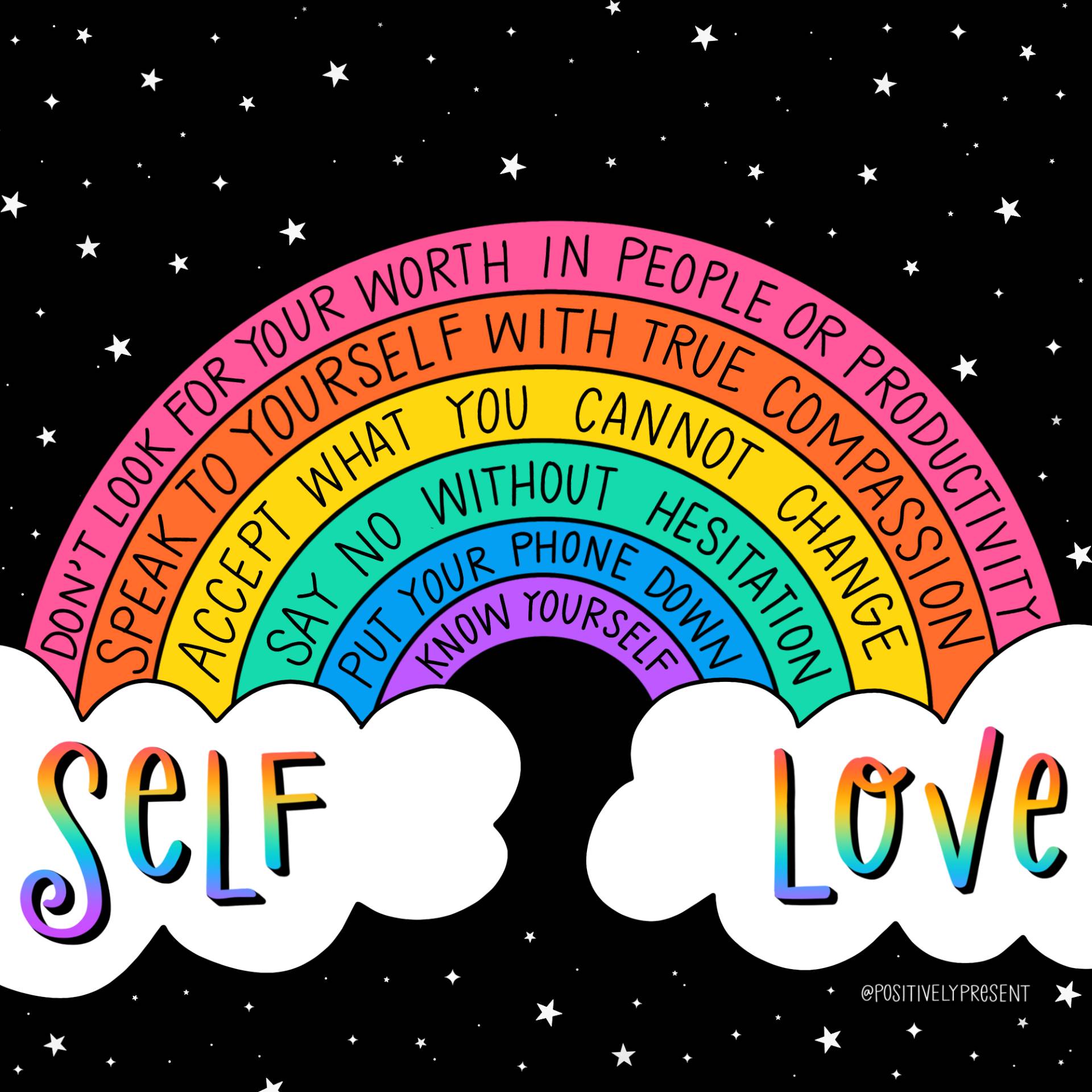
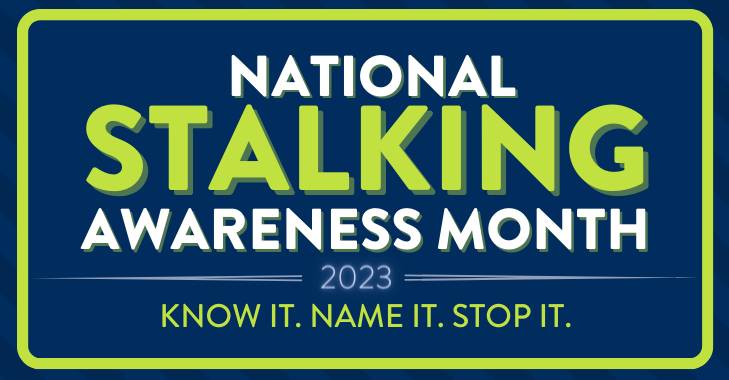
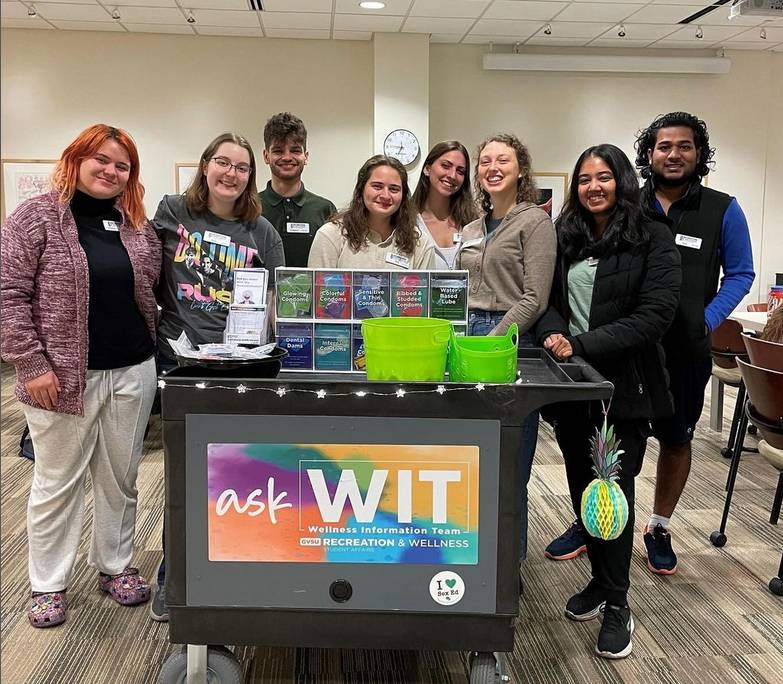
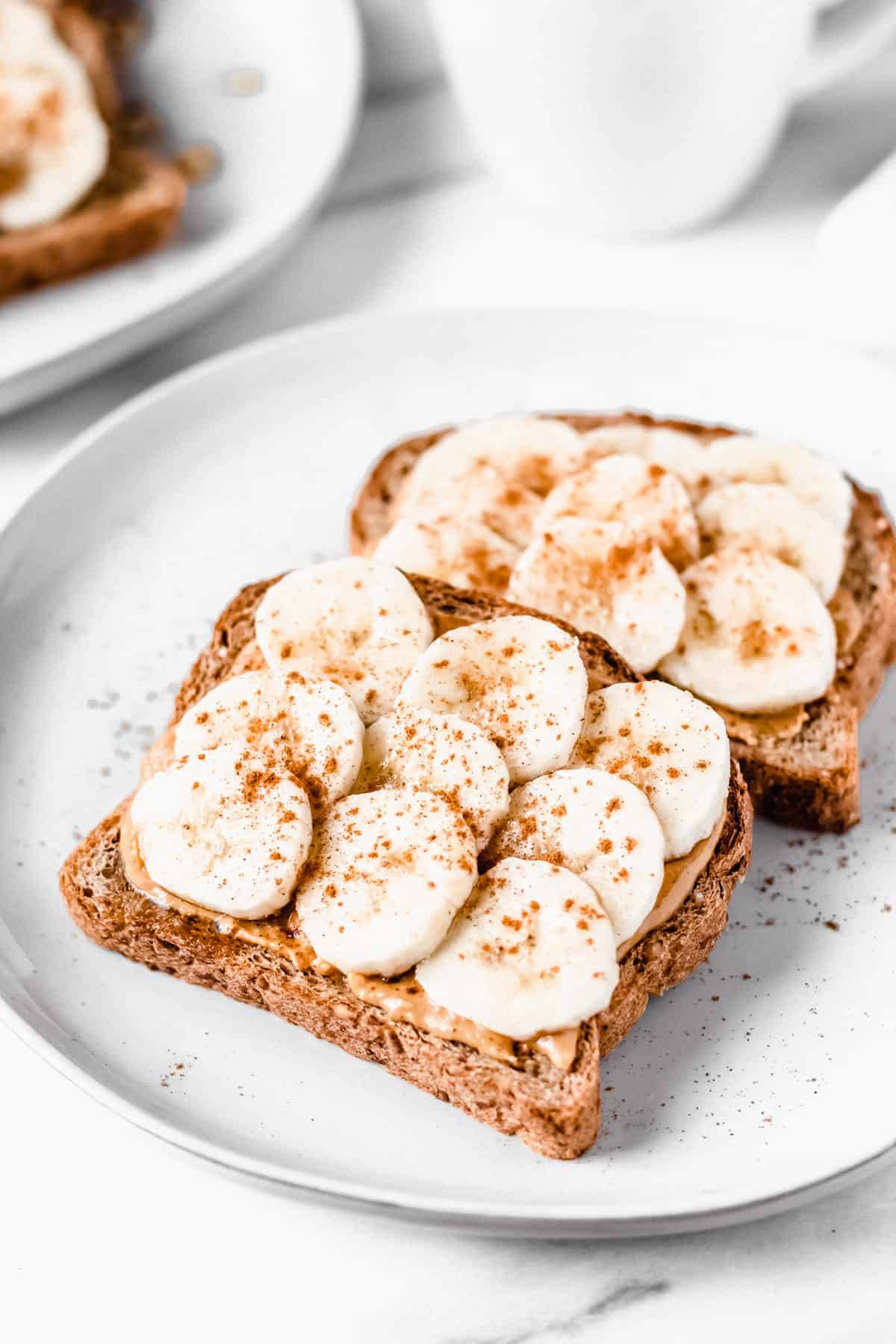
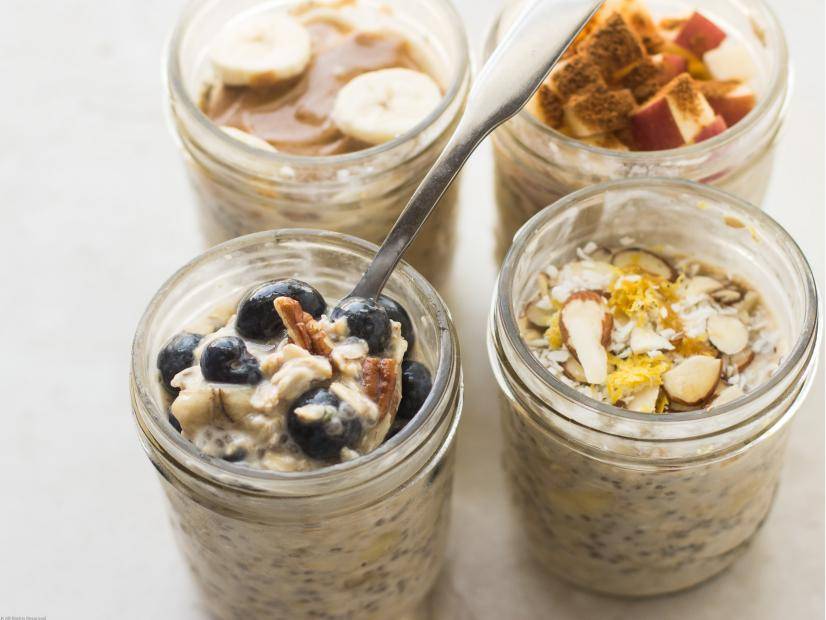

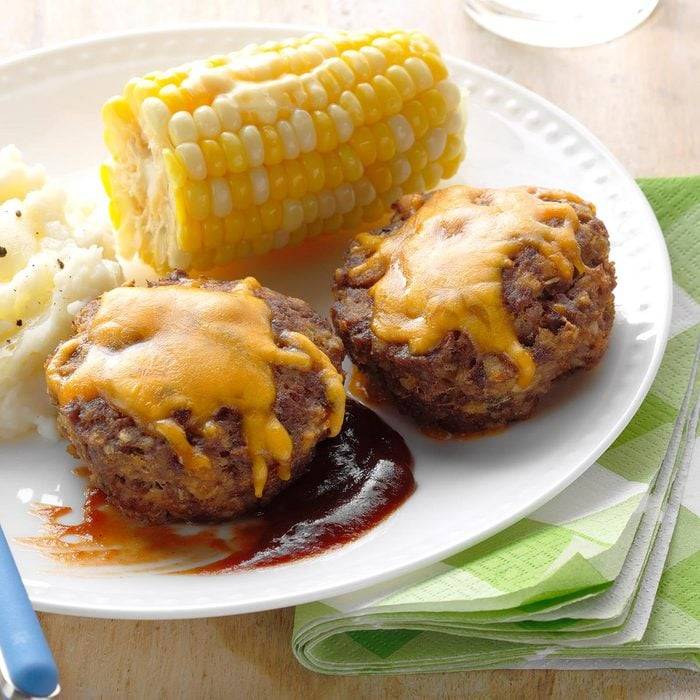

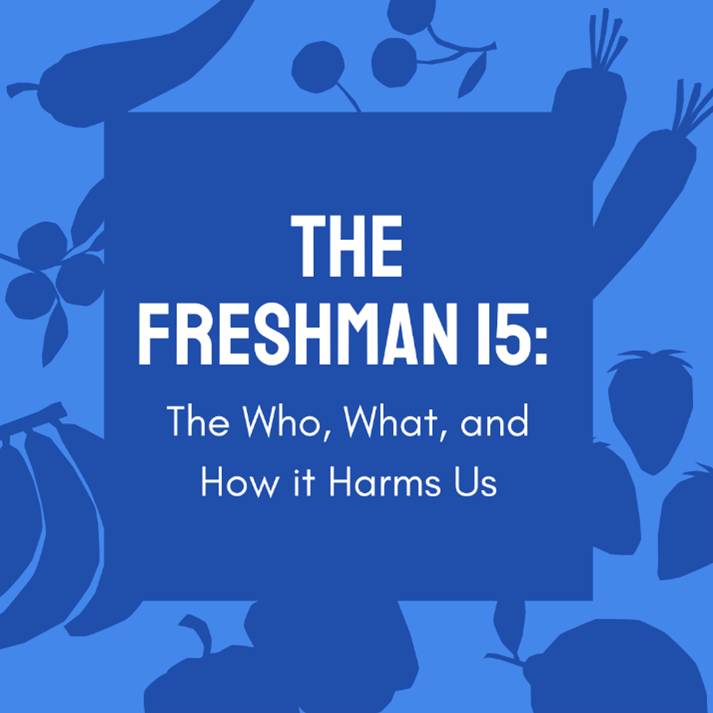
[1682353231].jpg)
